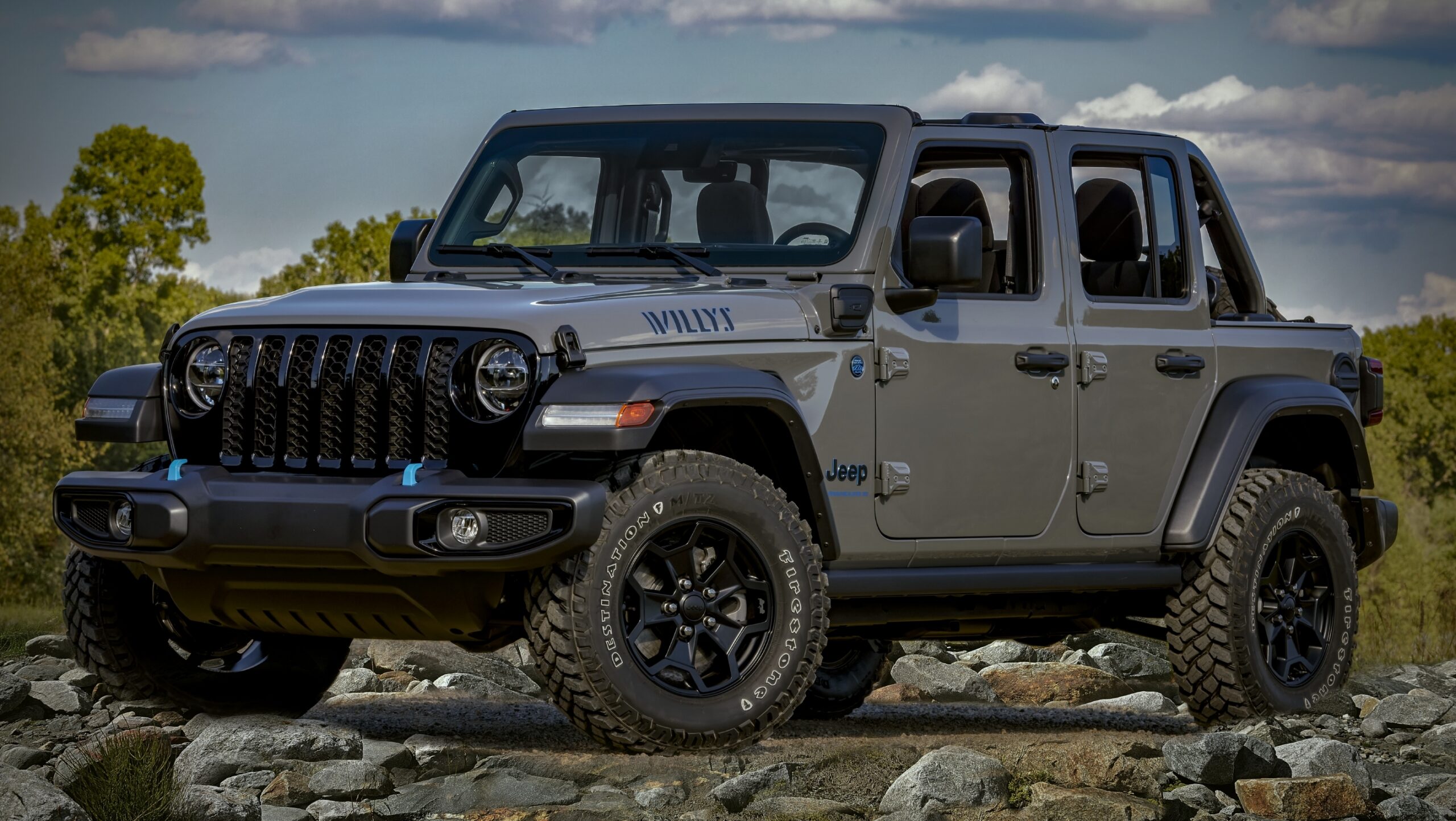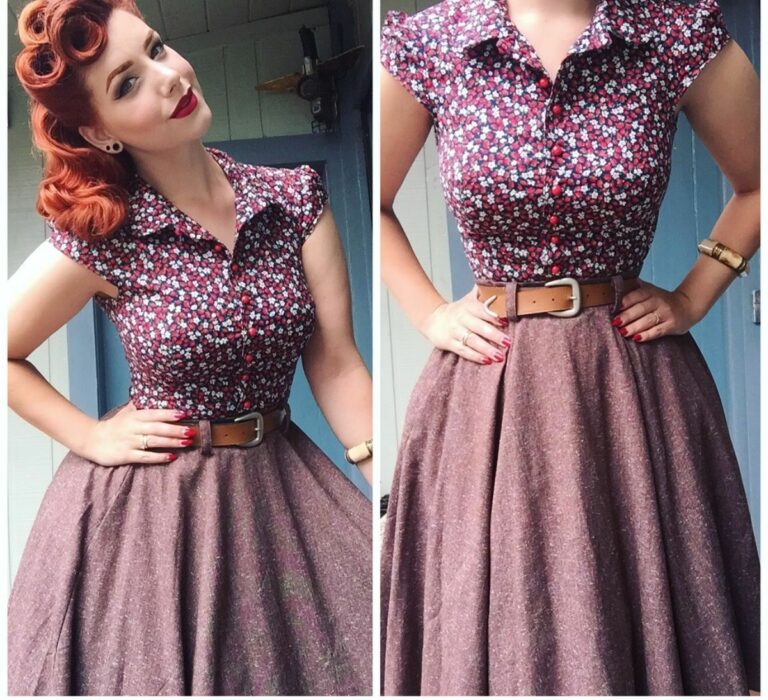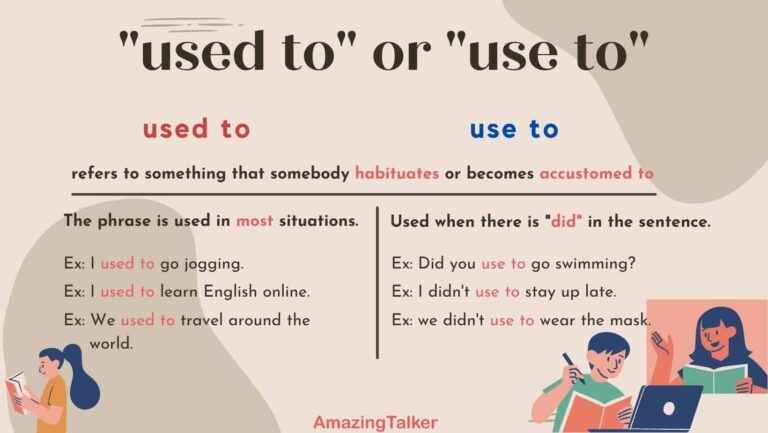Jeep Dana 30 Front Axle For Sale: A Comprehensive Buyer’s Guide
Jeep Dana 30 Front Axle For Sale: A Comprehensive Buyer’s Guide jeeps.truckstrend.com
The Jeep Dana 30 front axle is a ubiquitous component in the world of off-roading, a workhorse found beneath countless iconic Jeep models. From the rugged simplicity of the CJ to the modern capabilities of the JK, the Dana 30 has served as the backbone of their front-end articulation and power delivery. If you’re searching for a "Jeep Dana 30 Front Axle For Sale," you’re likely embarking on a journey to repair a damaged rig, upgrade an existing setup, or kickstart a custom build. This comprehensive guide will equip you with the knowledge needed to navigate the market, understand what you’re buying, and make an informed decision for your beloved Jeep.
Understanding the Jeep Dana 30 Front Axle
Jeep Dana 30 Front Axle For Sale: A Comprehensive Buyer’s Guide
At its core, the Dana 30 is a solid axle design, meaning the differential housing and axle tubes are a single, rigid unit. This robust construction is a hallmark of Jeep’s off-road prowess, providing durability and predictable handling on varied terrain. Produced by Dana Corporation, this axle has been a staple for decades due to its widespread availability, relatively lightweight design, and sufficient strength for light to moderate off-roading.
Its presence spans a wide range of Jeep models:
- Jeep CJ Series: Early iterations (e.g., CJ-5, CJ-7, CJ-8 Scrambler) often featured narrower Dana 30s.
- Jeep Wrangler YJ (1987-1995): Low-pinion Dana 30.
- Jeep Cherokee XJ (1984-2001): Predominantly high-pinion Dana 30s, known for their strength and better driveshaft angles.
- Jeep Grand Cherokee ZJ (1993-1998): Low-pinion Dana 30.
- Jeep Wrangler TJ (1997-2006): Low-pinion Dana 30.
- Jeep Wrangler JK (2007-2018): Wider, low-pinion Dana 30 with different ball joint and unit bearing designs.
- Jeep Wrangler JL (2018-Present): Base models continue to use a Dana 30 variant, though significantly updated.

High-Pinion vs. Low-Pinion: This is a crucial distinction. High-pinion (HP) Dana 30s (primarily found in XJs) place the pinion gear above the centerline of the ring gear. This design offers a better driveshaft angle, especially on lifted vehicles, and engages the stronger "drive" side of the ring gear teeth during forward motion, theoretically making it more robust under load. Low-pinion (LP) Dana 30s (found in YJ, TJ, ZJ, JK, JL) have the pinion below the centerline, which is generally considered slightly weaker in forward drive but still highly functional for most uses.
While the Dana 30 is celebrated for its versatility and cost-effectiveness, it’s essential to acknowledge its limitations. For extreme rock crawling, very large tires (e.g., 37 inches and above), or heavy V8 engine swaps, the Dana 30 may require significant upgrades or even a complete swap to a stronger axle like a Dana 44 or Dana 60.
Why Buy a Used Dana 30? Common Scenarios
There are several compelling reasons why someone might be in the market for a used Jeep Dana 30 front axle:
- Replacement for Damage: The most common scenario. Off-road mishaps, accidents, or even severe corrosion can bend, crack, or otherwise compromise an axle housing. A used Dana 30 offers a more affordable alternative to a brand-new unit.
- Gear Ratio Change: If you’ve upgraded to larger tires, you’ll need to re-gear your axles to restore lost power and optimize performance. Sometimes, finding a used axle with the desired ratio is more cost-effective than paying for a re-gear on your existing axle.
- Adding a Locker: Similarly, if you want to install an aftermarket differential locker for improved traction, it might be easier or cheaper to find a used Dana 30 already equipped with one, or to buy a "spare" axle to build up offline.
- 2WD to 4WD Conversion: For those with 2WD Jeep models (like some XJs or ZJs), a used Dana 30 is a necessary component for a 4WD conversion.
- Project Vehicle Build: Custom buggies, rock crawlers, or even restoring a classic Jeep often require a suitable front axle, and the Dana 30’s availability makes it an attractive choice.
- Spare Parts: Serious off-roaders sometimes buy a spare axle as a backup for remote trips, or to have on hand for future repairs.
Key Considerations When Buying a Dana 30
Purchasing a used axle requires diligence. You can’t just pick the first "Jeep Dana 30 Front Axle For Sale" you see. Here’s a detailed checklist of what to look for:
-
Application and Compatibility:
- Jeep Model Specifics: This is paramount. Axles vary significantly in width, mounting points (control arm mounts, coil spring perches), and steering linkage configurations depending on the Jeep model. A TJ Dana 30 is narrower than a JK Dana 30. An XJ Dana 30 (high-pinion) has different mounting points than a TJ (low-pinion). Ensure the axle matches your specific Jeep model and year.
- High-Pinion (HP) vs. Low-Pinion (LP): Confirm which type you need or prefer. HP is generally sought after for XJs and custom builds due to better driveshaft angles and perceived strength.
- ABS and Sensor Compatibility: Newer Jeeps (JK, JL) have ABS sensors integrated into the unit bearings. Ensure the axle you’re considering has the correct provisions or that your existing sensors are compatible.
-
Physical Condition and Integrity:
- Bends and Cracks: The most critical inspection. Visually inspect the axle tubes and differential housing for any signs of bending (often indicated by uneven tire wear on the donor vehicle, or obvious bowing), cracks, or significant impact damage. A bent axle tube will cause alignment issues and premature wear on components.
- Rust: Surface rust is common and usually not an issue. Excessive, deep, or flaky rust, especially around welds or mounting points, can indicate structural compromise.
- Mounting Points: Check all control arm mounts, track bar mount, sway bar mounts, and coil spring/leaf spring perches. Ensure they are intact, straight, and free of cracks or severe deformation.
- Differential Cover: Look for leaks around the cover gasket. While a minor leak can be fixed with a new gasket, it might indicate neglect or excessive fluid levels at some point. Inspect the cover itself for dents or gouges that could weaken it.
-
Internal Components and Wear Items:
- Gear Ratio: Crucial! Ask the seller for the gear ratio. If they don’t know, look for a tag on the differential cover bolts or plan to open the differential to count teeth. The ratio needs to match your rear axle (if you’re only replacing the front) and be appropriate for your tire size.
- Axle Shafts: Check for straightness (roll them if possible), spline damage, and the condition of the U-joints (if applicable) or CV joints (on JK/JL). Look for excessive play.
- Ball Joints: These are wear items. Grab the top and bottom of the tire (if still mounted) and push/pull to check for play. Excessive play means they need replacement, which adds to your cost. JK axles use different ball joint designs than TJ/XJ.
- Unit Bearings (Hub Bearings): Again, wear items. Check for play by rocking the tire side-to-side. Listen for grinding or humming noises if the axle was recently driven. Replacing these is a common maintenance task but an added expense.
- Seals: Check for oil leaks around the inner axle seals where the shafts exit the differential housing. Also, check the pinion seal. Leaks indicate seals need replacement.
-
Included Components:
- Brake Components: Many used axles come complete with rotors, calipers, and brake lines. Inspect their condition. Are the rotors warped or severely grooved? Are the calipers seized?
- Steering Components: Tie rod and drag link are often still attached. Check the condition of the tie rod ends and drag link ends for play.
- Locker/Limited Slip: If the seller claims it has an aftermarket locker or limited-slip differential, try to verify it visually (if possible) or ask for proof of installation. This significantly adds value.
-
Price and Logistics:
- Fair Market Value: Research what similar axles are selling for in your area and online. Condition, gearing, and included components heavily influence price.
- Shipping vs. Local Pickup: Axles are heavy and bulky. Shipping can be expensive. Local pickup from a salvage yard or private seller is often the most cost-effective option.
- Seller Reputation: Buy from reputable sellers, whether an established junkyard, a well-known forum member, or someone with good reviews.
Where to Find a Dana 30 Front Axle For Sale
The hunt for a used Dana 30 can take you to several places:
- Online Marketplaces:
- Craigslist/Facebook Marketplace: Excellent for local deals. Use specific search terms like "Jeep XJ Dana 30" or "TJ front axle." Be prepared to travel.
- eBay: Wider reach, often includes shipping options, but prices might be higher to cover fees and logistics.
- Dedicated Jeep Forums & Groups: Websites like JK-Forum, TJForum, CherokeeForum, and various Facebook groups dedicated to specific Jeep models or off-roading often have "For Sale" sections. This is a great way to buy from enthusiasts who know their parts.
- Salvage Yards / Junkyards: Often the cheapest source. You’ll need to do your own inspection, and they typically sell "as-is." Call ahead to confirm inventory.
- Specialized Off-Road Parts Retailers: Some shops that do custom builds or swaps will sell "pull-out" axles after upgrading a customer’s vehicle.
- Word of Mouth / Local Jeep Clubs: Networking with local Jeep enthusiasts can sometimes lead you to a great deal.
Installation & Post-Purchase Best Practices
Once you’ve secured your Dana 30, a few steps are critical before and during installation:
- Thorough Cleaning: Degrease and clean the entire axle. This allows for better inspection and makes working on it much more pleasant.
- Fluid Change: Drain any old differential fluid and refill with fresh gear oil of the correct weight (typically 80W-90 or 75W-140, consult your Jeep’s manual).
- Replace Wear Items: Even if they looked "okay," it’s often wise to proactively replace common wear items like:
- Ball joints
- Unit bearings (hubs)
- Axle shaft U-joints (if applicable)
- Inner axle seals and pinion seal
- Brake pads and rotors (if included and worn)
- Confirm Gearing: Before final assembly, verify the gear ratio, especially if you’re mixing and matching axles.
- Proper Torque Specs: Always use a torque wrench for all fasteners (control arms, track bar, shock mounts, differential cover, wheel nuts). Incorrect torque can lead to component failure or dangerous situations.
- Brake Bleeding: If you replaced calipers or disconnected brake lines, thoroughly bleed the brake system.
- Alignment: After any axle swap, a professional front-end alignment is absolutely crucial. This ensures proper handling, tire wear, and steering feel.
Upgrading Your Dana 30 (Briefly)
While the focus is on buying, it’s worth noting that the Dana 30 can be significantly strengthened:
- Chromoly Axle Shafts: Stronger than stock, reducing chances of breaking.
- Gussets & Truss Kits: Weld-on reinforcements for the axle tubes and inner C’s to prevent bending.
- Aftermarket Differential: Adding a locker or limited slip drastically improves off-road traction.
- Steering Upgrades: Heavier-duty tie rods and drag links.
These upgrades can make a Dana 30 quite capable, delaying the need for a more expensive Dana 44 swap for many enthusiasts.
Jeep Dana 30 Front Axle Estimated Price Guide
Please note: Prices are highly variable based on location, condition, included components, and seller. This table provides general estimates.
| Axle Type / Jeep Model | Condition & Included Components | Estimated Price Range (USD) | Notes & Considerations |
|---|---|---|---|
| XJ High-Pinion (HP) Dana 30 | Bare Housing (no shafts, diff) | $150 – $300 | Good for custom builds, requires full rebuild. |
| (1984-2001 Cherokee) | Complete (stock, good used) | $300 – $600 | Common, usually includes shafts, brakes. |
| Complete w/ Aftermarket Locker | $700 – $1200+ | Significant value added. | |
| TJ Low-Pinion (LP) Dana 30 | Bare Housing (no shafts, diff) | $100 – $250 | Least expensive option for a base. |
| (1997-2006 Wrangler) | Complete (stock, good used) | $250 – $500 | Widely available. |
| Complete w/ Aftermarket Locker | $600 – $1000+ | Check locker brand/condition. | |
| JK Low-Pinion (LP) Dana 30 | Bare Housing (no shafts, diff) | $200 – $400 | Wider, different ball joint/unit bearing design. |
| (2007-2018 Wrangler) | Complete (stock, good used) | $400 – $800 | More modern, but still base axle. |
| Complete w/ Aftermarket Locker | $900 – $1500+ | Least common to find with locker from factory. | |
| YJ Low-Pinion (LP) Dana 30 | Complete (stock, good used) | $200 – $400 | Similar to TJ, but older. |
| (1987-1995 Wrangler) | |||
| ZJ Low-Pinion (LP) Dana 30 | Complete (stock, good used) | $150 – $350 | Often good donor for parts, but sometimes narrower than desired. |
| (1993-1998 Grand Cherokee) |
Frequently Asked Questions (FAQ)
Q: What’s the biggest difference between high-pinion (HP) and low-pinion (LP) Dana 30s?
A: HP Dana 30s (found in XJs) have the pinion gear mounted higher, leading to better driveshaft angles for lifted Jeeps and engaging the stronger side of the ring gear teeth during forward motion. LP Dana 30s (YJ, TJ, ZJ, JK) have the pinion mounted lower.
Q: Can I put a JK Dana 30 in a TJ?
A: Not directly. A JK Dana 30 is significantly wider than a TJ Dana 30, and has different mounting points, ball joint designs, and unit bearings. Swapping would require extensive custom fabrication, making it impractical for most users.
Q: How do I know what gear ratio my axle has?
A: Look for a metal tag attached to one of the differential cover bolts. It often has the ratio stamped on it (e.g., 3.73, 4.10). If no tag, you can open the differential cover, mark the ring and pinion gears, and count the teeth on each, then divide the ring gear teeth by the pinion gear teeth. Alternatively, you can rotate the tire and count driveshaft rotations.
Q: Is a Dana 30 strong enough for 35-inch tires?
A: For light to moderate off-roading, a stock Dana 30 can handle 35-inch tires if driven carefully. However, for aggressive wheeling, especially with an open differential, upgrading the axle shafts (to chromoly) and adding gussets/trussing is highly recommended to prevent breakage and bending. Many enthusiasts consider 33-inch tires the sweet spot for an unmodified Dana 30.
Q: What’s the average lifespan of a Dana 30?
A: A well-maintained Dana 30 can last hundreds of thousands of miles. Its lifespan largely depends on how it’s used, how well it’s maintained (fluid changes, seal replacement), and the size of tires it’s running. Aggressive off-roading with oversized tires without proper reinforcement will significantly shorten its lifespan.
Q: Should I buy a bare Dana 30 housing or a complete axle?
A: It depends on your budget and mechanical skill. A bare housing is cheaper but requires you to source all internal components (gears, carrier, shafts, knuckles, brakes). A complete axle is more expensive upfront but is a "bolt-in" solution, though you’ll still want to inspect and possibly replace wear items. For most, a complete, good used axle is the most straightforward option.
Conclusion
The Jeep Dana 30 front axle remains a cornerstone of the Jeep aftermarket, offering a robust and accessible solution for repairs, upgrades, and custom builds. By understanding its various iterations, meticulously inspecting its condition, and knowing where to search, you can confidently find the perfect "Jeep Dana 30 Front Axle For Sale" to meet your needs. Whether you’re getting your daily driver back on the road or building your ultimate off-road machine, a well-chosen Dana 30 will serve as a reliable foundation for countless adventures to come. Remember, patience and thorough research are your best allies in this process, ensuring your investment pays off in trail-ready performance.



